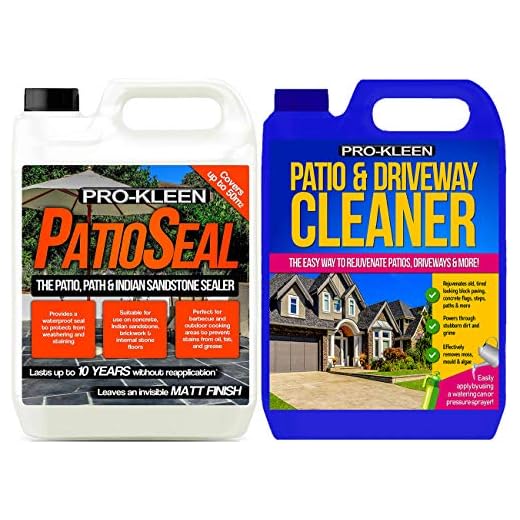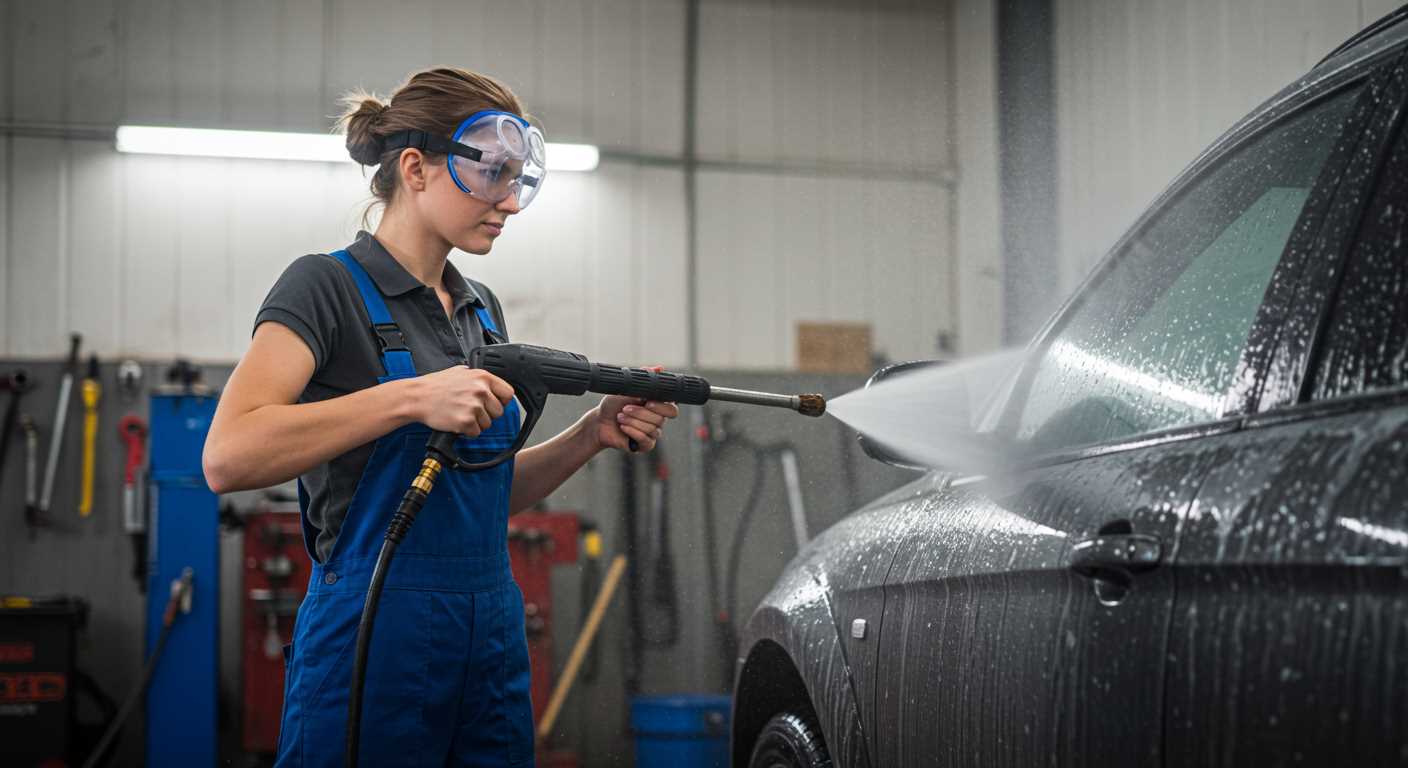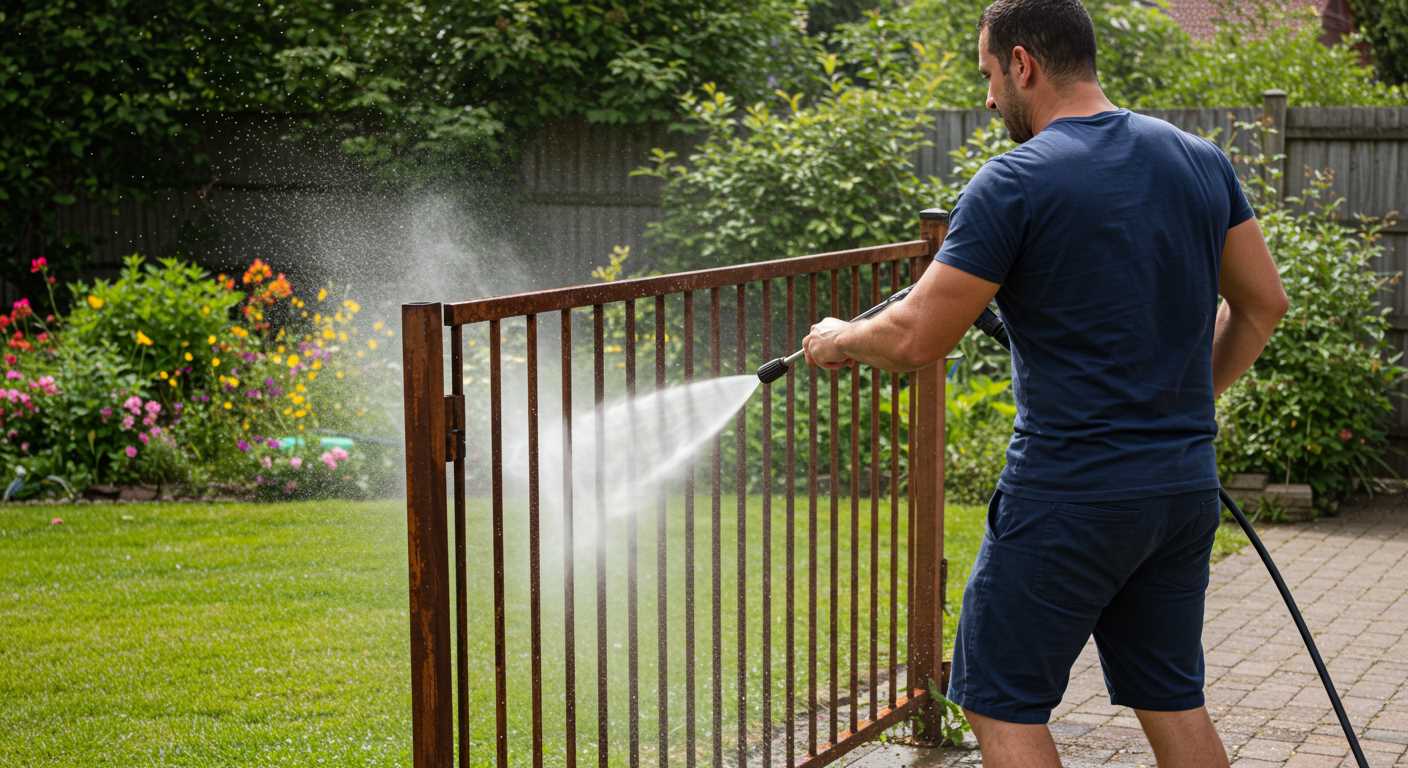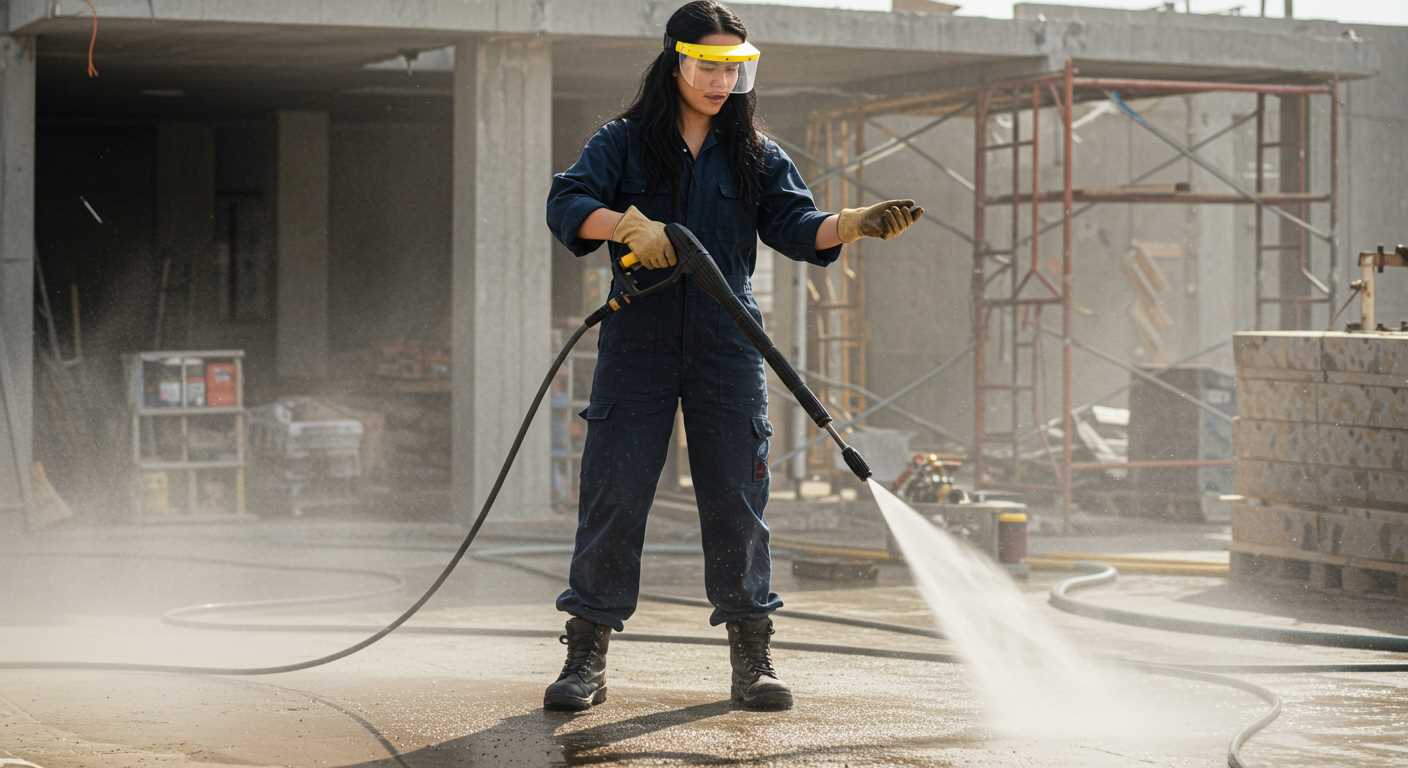



Utilising a high-pressure machine can transform a stained and weathered path into a fresh, inviting entrance. My extensive experience in the field has shown that many homeowners see instant results when employing this method. For the best outcome, select a unit that operates at a minimum of 2000 PSI, as this power level effectively removes dirt, oil, and other stubborn debris embedded in the surface.
Begin the restoration process by removing any loose items, such as leaves or garden decor. This preparation not only aids in achieving a comprehensive deep clean but also prevents any undesired damage to your belongings. Once you’re set up, employing a suitable detergent specifically designed for hard surfaces can enhance the overall results, breaking down grime more effectively.
Pay attention to the nozzle choice; a 15 or 25-degree angle typically provides the right balance of force and coverage for such tasks. Maintaining a consistent distance – ideally around 6 to 12 inches from the surface – ensures that you don’t inadvertently strip any material away. Once finished, a clear rinse with a wide spray pattern will leave your pavement looking renewed and revitalised.
Understanding Electric Pressure Washers

For optimal maintenance of outdoor spaces, knowing how to utilise these machines is paramount. Their ability to generate high water flow and pressure aids in efficiently removing stubborn debris, grime, and stains. When selecting a model, consider factors such as pressure rating, water flow rate, and ease of use.
- Pressure Rating: Models often range from 1300 to 3000 PSI. Higher ratings mean tougher jobs can be tackled, but for standard residential tasks, 1500 to 2000 PSI is usually sufficient.
- Flow Rate: Measured in gallons per minute (GPM), a higher flow rate ensures more water is delivered, enhancing cleaning effectiveness. A flow rate of 1.2 to 2.5 GPM is typical for residential units.
- Type of Nozzles: Different nozzles provide varying spray patterns, from a narrow blast for tough stains to a wider spray for general cleaning. Interchangeable nozzle tips increase versatility.
- Portability: Models with wheels or lightweight designs facilitate easier manoeuvrability. Consider cord length and hose options to ensure sufficient reach.
Regular maintenance of your unit prolongs its lifespan and keeps it performing optimally. After each use, empty the water from the system, and check for blockages in the hose and nozzles. Additionally, periodic replacement of seals and O-rings ensures a proper seal and prevents leaks.
Lastly, always follow safety precautions. Goggles and protective wear are essential to shield against debris and water spray. Understanding the capabilities of your equipment maximises effectiveness for various outdoor tasks.
Choosing the Right Pressure Rating for Driveway Cleaning
The ideal pressure rating for driveway maintenance typically ranges between 2000 to 3000 PSI. This level is sufficient to remove oil stains, grime, and mildew without damaging the surface. Opting for a model within this range ensures you achieve effective results with minimal risk to your pavement.
Factors Influencing Pressure Selection
When determining the optimal PSI, consider the surface material. For concrete pavements, a rating of around 3000 PSI is advisable as it safely tackles tougher stains. However, for asphalt surfaces, a lower range of about 2000 to 2500 PSI is adequate, preventing potential harm to the softer material.
The type of debris also affects your choice. For instance, heavier accumulations like grease or oil may necessitate a higher setting within the suggested range, while lighter cleaning tasks can be managed with lower levels. Always balance effectiveness with safety to maintain the integrity of your surfaces.
Complementary Features to Consider
Look for models that include adjustable nozzles, as this allows for varying degrees of intensity. A rotating nozzle can enhance your cleaning capabilities, especially for stubborn spots. Additionally, features like detergent tanks can aid in enhancing cleaning power without requiring excessive pressure.
Ultimately, selecting the right pressure rating goes a long way in ensuring thorough maintenance while preserving the quality of your outdoors. Invest in a reliable product that meets these parameters for optimal performance.
Preparing Your Driveway for Pressure Washing
Remove any large debris, such as leaves, branches, or stones, to prevent blockage during the cleaning process. Next, clear away any furniture, vehicles, or other items that might obstruct access to the surface. This step is vital to ensure an uninterrupted cleaning session.
Check for any cracks or significant damage on the surface. If you spot any, consider patching them before proceeding. This not only enhances the surface durability but also optimises the cleaning effect.
Apply a pre-treatment solution to areas stained by oil, mildew, or grime. Products formulated for this purpose can penetrate stubborn spots, making subsequent rinsing more effective. Allow the solution to sit for the specified time on the label for maximal results.
Ensure you have a reliable water source nearby. A garden tap with sufficient pressure will support the performance of your equipment and avoid interruptions. Use a hose that can reach all areas without needing adjustments.
Finally, wear appropriate protective gear, including goggles and gloves, to safeguard against splashes. Protect nearby plants and landscaping with tarps or plastic sheeting to prevent any accidental damage during the process.
Best techniques for using an electric pressure washer
Begin with a thorough inspection of all surfaces. Identify stubborn stains, grime, or mould. Target these areas by adjusting the nozzle for the widest spray pattern, ensuring even coverage.
Utilise a detergent compatible with your equipment; pre-soaking enhances the effectiveness of the cleansing process. Apply it from the bottom up, allowing it to dwell for several minutes. This loosens dirt and makes removal easier.
Switch to a narrow nozzle for intense cleaning of tough spots. Keep a distance of about 12 inches from the surface, moving the spray in a consistent motion. Overlap each stroke to prevent streaks and ensure thorough treatment.
For large areas, use overlapping strokes and maintain a steady pace. This conserves solution and time. In corners or hard-to-reach spaces, use an extension wand to maximise reach without compromising performance.
Post-cleaning, run plain water through the machine for a few minutes. This eliminates any remaining detergent residue. Clean the nozzle filter to prevent blockages and maintain optimal function for future tasks.
Store the device in a dry, protected area. Ensure all attachments are cleaned and securely stored to prolong their lifespan and reliability. Regular maintenance checks can help identify wear and tear early.
Common driveway stains and how to remove them
Oil spills require immediacy. Absorb as much of the oil as possible with paper towels or cat litter. Then, sprinkle baking soda or a commercial degreaser over the stained area. Scrub with a stiff brush and rinse with water. For stubborn stains, a mixture of dish soap and hot water can be effective.
Rust often appears from metal objects left on the surface. Use a rust remover specifically designed for patios or concrete surfaces. Apply according to the instructions and scrub with a brush. Rinsing well is crucial to prevent residue.
Mold and mildew thrive in damp conditions. Mix equal parts of bleach and water or opt for a commercial mould remover, applying it directly to the affected area. Allow it to sit for several minutes before scrubbing and rinsing thoroughly.
Food and drink stains can usually be tackled with simple household items. For ketchup, mustard, or beverage stains, a solution of water and dish soap can suffice. Apply this with a sponge, scrub, and rinse.
| Stain Type | Recommended Treatment | Scrubbing Method |
|---|---|---|
| Oil | Baking soda or degreaser | Stiff brush |
| Rust | Commercial rust remover | Brush |
| Mould/Mildew | Bleach solution or mould remover | Scrubbing brush |
| Food/Drink | Water and dish soap | Sponge |
Each type of blemish requires a tailored approach. Always test your chosen cleaning solution on a small, inconspicuous area first to ensure it won’t cause damage to the surface. Consistency in stain removal leads to a more pristine surface overall.
Post-cleaning care for your driveway
After refreshing your surface, regular maintenance is crucial to prolong the results. Begin with a thorough inspection for any remaining debris or stains. Sweep away leaves and dirt to prevent them from settling down or causing further discolouration.
Consider applying a sealant to protect against future wear and staining. A quality sealant can create a barrier that repels water, oil, and grime. Follow the manufacturer’s guidelines for application, ensuring the surface is completely dry before starting.
Establish a cleaning schedule based on traffic and environmental factors. Generally, a once or twice a year deep clean is sufficient, but monthly spot checks will help catch stains early. For regular upkeep, simply using a broom or a hose to rinse off accumulations can maintain the appearance.
When using any type of cleaning solution or sealant, always do a patch test in an inconspicuous area to ensure compatibility with your surface. This will prevent unexpected reactions that might affect the look or integrity of the material.
Lastly, provide adequate drainage around the area to avoid water pooling, which can lead to deterioration. Ensure that the slope directs water away from your home to keep everything in top condition.
Safety Precautions During High-Pressure Cleaning

Always wear protective gear. Use safety goggles or a face shield to protect your eyes from debris and water. Sturdy gloves guard your hands against slips and sharp objects while working.
Ensure footwear is slip-resistant. Wet surfaces can be hazardous, so opt for shoes that provide good traction to prevent falls.
Before starting, inspect the area for potential hazards. Remove any obstacles, furniture, or items that might get damaged or be in the way. Check for overhanging branches or power lines to avoid accidents.
Electrical Safety
Keep the power source dry. Use an extension cord rated for outdoor use, and ensure it is in good condition. Avoid using damaged cords, which pose shock risks.
Position the power source at a safe distance from where you’re working to minimise the risk of electric shock. Ensure all connections are secure and that you are not standing in water while operating equipment.
Water Pressure Awareness

Be mindful of the water force generated. High-pressure streams can cause serious injury, including cuts or bruises. Test the pressure on a small, inconspicuous area before proceeding to ensure it is suitable for the surface you’re treating.
Maintain a safe distance from the surface being treated. Suitable distance helps prevent damage or injury while providing effective treatment. Always aim the nozzle away from people, pets, and fragile objects.
FAQ:
Can I use an electric pressure washer on my driveway?
Yes, you can use an electric pressure washer on your driveway. These machines are designed to handle various surfaces, including concrete and asphalt. It’s important to select the right pressure setting to avoid damaging the surface. Typically, a setting between 1500 to 2000 PSI is suitable for most driveways. Ensure that you also use the correct nozzle to maximise cleaning efficiency.
What are the benefits of using an electric pressure washer for driveway cleaning?
Using an electric pressure washer for your driveway offers several advantages. Firstly, it’s generally easier to handle than gas-powered models, making it suitable for longer cleaning sessions. Secondly, electric pressure washers are quieter and produce fewer emissions, which can be beneficial for residential areas. Lastly, they often require less maintenance and are more affordable to operate, as there’s no need for fuel or regular oil changes.
How do I prepare my driveway for cleaning when using an electric pressure washer?
Preparing your driveway for pressure washing involves several steps. Begin by removing any loose debris, such as leaves or stones. If there are any large stains, it may help to apply a suitable cleaner or degreaser beforehand. Ensure that all nearby plants and belongings are protected from water and potential cleaning solutions. Finally, check that your pressure washer is in working order and that you have the right attachments ready.
Are there any surfaces I should avoid cleaning with an electric pressure washer?
While electric pressure washers are versatile, it’s wise to avoid using them on sensitive surfaces. For instance, painted surfaces or soft woods, like cedar, might get damaged due to high pressure. Similarly, surfaces with loose or damaged materials may be susceptible to further damage during cleaning. Always read the manufacturer’s instructions for suitable usage and consider testing on a small, inconspicuous area first.
How often should I clean my driveway with an electric pressure washer?
The frequency of cleaning your driveway depends on various factors, including weather conditions, location, and usage. Generally, it’s advisable to clean your driveway at least once or twice a year to maintain its appearance and prevent long-term staining or degradation. However, if you frequently notice oil stains or moss growth, you may want to clean it more regularly. Seasonal cleaning can also help prepare the surface for harsh weather conditions.








